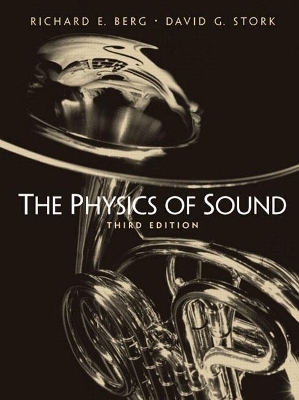
Physics of Sound, The
Pearson (Verlag)
978-0-13-145789-8 (ISBN)
Using a hands-on and experimental approach, this book incorporates developments in digital audio technology—including consumer products—into a firm foundation of the physics of sound. Selected topics are interesting to a broad audience, with many applications of sound and waves beyond strictly musical applications. No background in physics, mathematics, or music is required.
Professor Richard E. Berg received his B.S. degree in music from Manchester College (Indiana), with emphasis on piano and clarinet, and M.S. and Ph.D. degrees in physics from Michigan State University. After completing his Ph.D. thesis in the area of cyclotron design, be began work on the construction of the cyclotron at the University of Maryland. This work included design and construction of the external beam transport system, design of solid state radiation detectors, and support for research in nuclear physics using the cyclotron. In 1972 he became the director of the University of Maryland Physics Lecture-Demonstration Facility, which has since developed one of the largest and most diverse collections of physics demonstrations in the world. He has initiated courses in Physics of Music laboratory, and an honors course, Nuclear Physics and Society, involving applications of nuclear physics and radiation to contemporary society. Professor Berg has sung and played renaissance wind instruments with University of Maryland Collegium Musicum for over 20 years. He has also played harpsichord and recorder in a smaller group known as the Go for Baroque Ensemble. Professor Berg has been active in physics outreach programs, annually presenting a series of public demonstration programs called Physics is Phun, which has been attended by more than 100,000 people since 1982. Over his career he has presented more than 500 traveling demonstration programs to area school groups and more than 300 smaller programs at the University of Maryland for visiting groups. In the photograph Professor Berg is shown demonstrating the twelve-harmonic variable frequency digital Fourier synthesizer designed and constructed at the University of Maryland. David G. Stork is Chief Scientist of Ricoh Innovations, Inc., and Consulting Professor of Electrical Engineering at Stanford University. He received his B.S. degree in physics from the Massachusetts Institute of Technology, and his M.S. and Ph.D. degrees in physics from the University of Maryland. Dr. Stork is an accomplished orchestral and chamber timpanist/percussionist, has performed in major concert halls throughout the United States, and performed on more than a dozen compact disks, including four world premier recordings. His principal research interests are in pattern classification, machine learning, and novel uses of the internet. He is an award-winning teacher (Ralph D. Myers Teaching Award, University of Maryland) and publishes and lectures widely on his research and scholarly topics as diverse as Renaissance painting and the relation of science fiction to science fact. His other books include Pattern Classification (2nd ed., Wiley 2000, W R. Duda and P Hart), Speechreading by Humans and Machines (Springer, 1996, W M. Hennecke), Seeing the Light (Whey, 1986, W D. Falk and D. Brill), and HAL's Legacy: 2001's Computer as Dream and Reality (MIT 1997), the latter serving as the source for his PBS television documentary "2001: HAL's Legacy." Dr. Stork sits on the editorial boards of four international journals and is a member of IEEE (Institute of Electrical and Electronics Engineers), ACM (Association for Computing Machinery), OSA (Optical Society of America), INNS (International Neural Network Society), and the Sigma XI Honorary Research Society.
(NOTE: Each chapter concludes with Summary, Questions, Problems, and References.)
1. Simple Harmonic Motion and Applications
2. Waves and Sound
3. Standing Waves and the Overtone Series
4. Analysis and Synthesis of Complex Waves
5. Electronic Music and Synthesizers
6. The Human Ear and Voice
7. Sound Recording and Reproduction
8. Room and Auditorium Acoustics
9. Musical Temperament and Pitch
10. Woodwind Instruments
11. Brass Instruments
12. String Instruments
13. The Piano
14. Percussion Instruments
Appendix A: Elementary Music Theory
Appendix B: Terms and Units
Appendix C: Prefixes with Common Units
Glossary of Terms
Index
| Erscheint lt. Verlag | 17.8.2004 |
|---|---|
| Sprache | englisch |
| Maße | 100 x 100 mm |
| Gewicht | 100 g |
| Themenwelt | Naturwissenschaften ► Physik / Astronomie ► Mechanik |
| ISBN-10 | 0-13-145789-6 / 0131457896 |
| ISBN-13 | 978-0-13-145789-8 / 9780131457898 |
| Zustand | Neuware |
| Haben Sie eine Frage zum Produkt? |
aus dem Bereich


